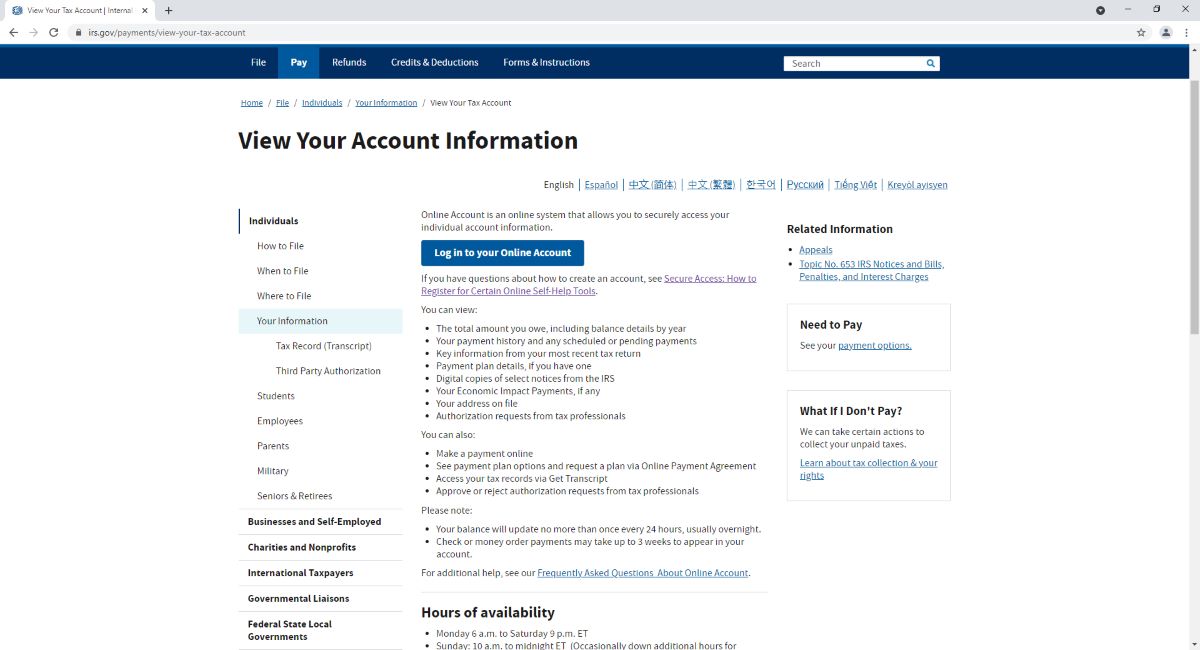

Finance
How To Set Up A Small Business Phone System
Published: November 25, 2023
Looking to set up a small business phone system? Discover effective strategies and cost-saving options in our comprehensive finance-focused guide.
(Many of the links in this article redirect to a specific reviewed product. Your purchase of these products through affiliate links helps to generate commission for LiveWell, at no extra cost. Learn more)
Table of Contents
- Introduction
- Choosing the Right Phone System for Your Small Business
- Determining Your Communication Needs
- Setting Up Your Small Business Phone System
- Connecting and Configuring Phone Lines
- Installing and Configuring VoIP Services
- Choosing and Configuring Hardware or Software Phones
- Setting Up Voicemail and Call Forwarding
- Integrating Additional Communication Features
- Testing and Troubleshooting Your Small Business Phone System
- Conclusion
Introduction
Setting up a reliable and efficient phone system is essential for the success of any small business. A well-designed phone system enables smooth communication with customers, employees, and business partners, ensuring that you never miss a call and can effectively manage your business operations.
In today’s digital age, there are several options available when it comes to choosing a phone system for your small business. From traditional landlines to Voice over Internet Protocol (VoIP) services, each option has its own set of advantages and considerations.
In this article, we will explore the process of setting up a small business phone system and provide guidance on choosing the right system for your specific needs. Whether you are a startup, a home-based business, or a small office, this guide will help you navigate the various options and make an informed decision.
By investing in a reliable small business phone system, you can enhance your company’s professionalism, streamline communication processes, and improve customer satisfaction. Let’s dive into the details and get started on setting up your small business phone system.
Choosing the Right Phone System for Your Small Business
Before you start setting up your small business phone system, it’s important to understand the different options available and evaluate which one best suits your needs. Here are some key factors to consider when choosing a phone system:
- Traditional Landlines: Traditional landlines operate using copper wiring and require a physical connection to your office. They are reliable and offer good call quality, but can be relatively expensive and lack advanced features like call forwarding and voicemail-to-email.
- Voice over Internet Protocol (VoIP): VoIP phone systems utilize your internet connection to make and receive calls. This option is cost-effective and offers a wide range of features such as call forwarding, auto-attendant, and mobile app integration. It’s a great choice for small businesses looking for flexibility and scalability.
- Virtual Phone Systems: Virtual phone systems function entirely through the cloud, eliminating the need for physical hardware. They are ideal for businesses with remote teams and provide features like call routing, voicemail transcription, and virtual conferencing. Virtual systems are easy to set up and manage, making them a popular choice for small businesses.
- Unified Communication Systems: Unified communication systems integrate various communication channels, such as phone, email, messaging, and video conferencing, into a single platform. They enhance collaboration and efficiency, but may be more complex and expensive to implement.
When choosing a phone system, consider your budget, the size of your business, the number of employees, and your specific communication requirements. It’s also essential to anticipate and plan for future growth, ensuring that the system you choose can accommodate your expanding needs.
Once you have weighed the pros and cons of each option and assessed your business requirements, you can make an informed decision on the best phone system for your small business. Next, we will guide you through the process of setting up your chosen phone system.
Determining Your Communication Needs
Before you proceed with setting up your small business phone system, it’s important to determine your specific communication needs. This will help you choose the right features and configurations to meet your requirements. Here are some factors to consider:
- Employee Extensions: Determine the number of employees who will need their own phone extensions. This will enable internal communication and extension-to-extension dialing.
- Incoming and Outgoing Calls: Consider the volume of incoming and outgoing calls your business receives on a daily basis. This will help you choose the right number of phone lines or channel capacity for your system.
- Call Routing: Consider if you need features such as auto-attendant, which directs callers to the appropriate department or extension. This will help manage incoming calls efficiently and provide a professional image to your customers.
- Voicemail: Determine if you need voicemail services for individual extensions or for the main business line. Voicemail allows callers to leave messages when you are unavailable or outside of business hours.
- Call Management Features: Consider features like call forwarding, call waiting, and call hold. These features enhance call management and ensure important calls are not missed.
- Conference Calling: If you frequently conduct meetings with remote team members or clients, consider if you need conference calling capabilities. This will enable seamless communication and collaboration.
- Mobile Integration: If you and your employees are frequently on the go, consider if you need features such as mobile app integration. This allows you to make and receive calls using your mobile devices, ensuring you stay connected no matter where you are.
By assessing your communication needs, you can identify the necessary features and functionalities required to effectively manage your small business phone system. This will streamline your decision-making process and ensure that the system you set up aligns perfectly with your requirements. Now that you have determined your needs, it’s time to move on to setting up your small business phone system.
Setting Up Your Small Business Phone System
Setting up your small business phone system involves several steps to ensure proper installation and configuration. Follow these guidelines to get your system up and running:
- Connecting and Configuring Phone Lines: If you opt for a traditional landline system, connect your phone lines to the designated ports or jacks in your office. Contact your service provider if you need assistance with the installation. For VoIP or virtual phone systems, ensure your internet connection is stable and configured properly.
- Installing and Configuring VoIP Services: If you choose a VoIP system, sign up with a reliable service provider and configure the settings according to your business needs. This may include setting up call routing, voicemail, and auto-attendant features.
- Choosing and Configuring Hardware or Software Phones: Depending on your phone system, you may need to decide between hardware phones or software-based phones. Hardware phones are physical devices, while software phones can be installed on computers or mobile devices. Configure your phones with the appropriate settings and test their functionality.
- Setting Up Voicemail and Call Forwarding: Enable voicemail services for individual extensions or your main business line. Set up personalized voicemail greetings and configure call forwarding options to ensure calls are directed to the right place when needed.
- Integrating Additional Communication Features: Explore and integrate additional features that enhance your small business phone system, such as caller ID, call recording, or virtual conferencing. Consult your service provider or system administrator for guidance on enabling these features.
- Testing and Troubleshooting Your Small Business Phone System: Once your phone system is set up, conduct thorough testing to ensure all features are working correctly. Test incoming and outgoing calls, voicemail functionality, call routing, and any integrated features. If you encounter any issues, consult the system documentation or contact your service provider for troubleshooting assistance.
Properly setting up your small business phone system is crucial to ensure smooth communication and efficient operations. Take the time to carefully follow each step and seek assistance from your service provider or IT support if needed.
Now that your phone system is up and running, you can enjoy the benefits of a reliable communication channel for your small business. In the next section, we will discuss the importance of ongoing maintenance and support for your phone system.
Connecting and Configuring Phone Lines
Connecting and configuring phone lines is a crucial step in setting up your small business phone system. Whether you are using traditional landlines or VoIP services, proper installation and configuration are essential for seamless communication. Here’s a guide to help you through this process:
- Traditional Landlines: If you’re using traditional landlines, contact your service provider to arrange the installation of phone lines in your office. They will guide you through the process of connecting the lines to your office phone system. Ensure that the lines are properly connected to the designated ports or jacks in your office.
- Voice over Internet Protocol (VoIP): If you’ve opted for a VoIP phone system, the first step is to assess your internet connection’s quality and reliability. A stable and high-speed internet connection is crucial for maintaining clear voice calls. Make sure you have enough bandwidth to support the number of concurrent calls you anticipate. If needed, consider upgrading your internet plan to ensure smooth VoIP communication.
- Router Configuration: For VoIP phone systems, you may need to configure your router to prioritize voice traffic (QoS – Quality of Service) for better call quality. Refer to your router’s user manual for instructions on configuring QoS. Additionally, some VoIP providers may require specific ports to be open on your router for proper communication. Consult the provider’s documentation for these requirements.
- Setting up Virtual Phone Systems: Virtual phone systems operate entirely in the cloud, so there is no need to connect physical phone lines. Instead, you will need to configure the system settings through the provider’s online portal. Follow the instructions provided by the virtual phone system provider to establish the necessary connections and configure the system to your requirements.
It’s important to note that when connecting and configuring phone lines, it’s recommended to involve IT professionals or consult with your service provider to ensure a smooth setup. They can provide guidance and assistance specific to your chosen phone system and address any technical issues that may arise.
Once your phone lines are connected and configured, test them by making test calls and checking the call quality. If you encounter any issues, contact your service provider’s support team for assistance. Properly connecting and configuring phone lines will lay the foundation for a reliable and efficient small business phone system.
In the next section, we will discuss the process of installing and configuring VoIP services, which is relevant if you’ve chosen a VoIP phone system for your small business.
Installing and Configuring VoIP Services
If you have chosen a Voice over Internet Protocol (VoIP) phone system for your small business, the next step is to install and configure the VoIP services. VoIP offers a cost-effective and feature-rich solution for your business communication needs. Here’s a step-by-step guide to help you through the process:
- Choose a Reliable VoIP Service Provider: Research and select a reputable VoIP service provider that aligns with your business requirements. Consider factors such as pricing, features, customer support, and scalability.
- Sign Up and Set Up an Account: Register an account with your chosen VoIP service provider. Follow their instructions to complete the registration process, including providing essential details such as your business name, address, and payment information.
- Assess Your Internet Connection: Evaluate your internet connection to ensure it meets the requirements for VoIP. An internet connection with sufficient bandwidth and low latency is necessary for high-quality voice calls. If needed, consider upgrading your internet plan to support the anticipated call volume.
- Configure Account Settings: Log in to your VoIP service provider’s online portal or dashboard. Configure your account settings, including adding users, setting up extensions, and configuring any call routing rules or auto-attendant features. You may also have the option to customize your voicemail greetings and set up call forwarding.
- Setup Hardware or Software Phones: Depending on your preference and system requirements, choose between hardware or software phones for your VoIP system. Hardware phones are physical devices plugged into the internet network, while software phones can be installed on computers or mobile devices. Follow the manufacturer’s instructions to connect and configure the phones to work with your VoIP service.
- Test and Fine-Tune: Test your VoIP system by making and receiving calls to ensure everything is functioning properly. Check the call quality, voicemail functionality, and any additional features you have set up. If needed, fine-tune your system settings to optimize call quality and address any issues.
It’s important to consult the documentation provided by your VoIP service provider for detailed instructions specific to their platform. Additionally, take advantage of their customer support if you encounter any difficulties during the installation and configuration process.
By properly installing and configuring your VoIP services, you can leverage the advantages of a feature-rich and cost-effective phone system. In the next section, we will explore the process of choosing and configuring hardware or software phones for your VoIP system.
Choosing and Configuring Hardware or Software Phones
When setting up a Voice over Internet Protocol (VoIP) phone system for your small business, you have the option to choose between hardware or software phones. Each option has its advantages, and the choice depends on your specific requirements and preferences. Here’s a guide to help you make the right decision and configure the chosen phones:
- Hardware Phones: Hardware phones are physical devices specifically designed for VoIP communication. They usually connect to your internet network using an Ethernet cable. When choosing hardware phones, consider factors such as the number of phone lines you need, display features, call quality, and additional functionalities like programmable buttons for speed dialing or call handling. Purchase hardware phones from reputable vendors or consult with your VoIP service provider to ensure compatibility.
- Software Phones: Software phones, also known as softphones, are applications that you can install on your computers, laptops, or mobile devices. They simulate the functionalities of a traditional phone using your device’s microphone, speakers, and internet connection. Software phones are a cost-effective and flexible solution, especially for remote or mobile workers. Popular software phone options include applications like Zoiper, 3CX, or Bria. Install the chosen software phone application and configure it with the necessary account credentials provided by your VoIP service provider.
- Configuration: Once you have chosen the type of phone, you need to configure it to work with your VoIP system. For hardware phones, follow the manufacturer’s instructions to connect them to your internet network. Access the phone’s settings and enter the required information provided by your VoIP service provider, such as SIP credentials (username, password, and server address). Refer to the phone’s user manual or consult with your provider’s support for assistance in configuring advanced settings.
- Additional Considerations: Keep in mind that different VoIP service providers may have specific requirements or recommendations for hardware or software phones. Always check their documentation or contact their support team for guidance. Additionally, consider factors such as headset compatibility, power over Ethernet (PoE) support for hardware phones, and the need for additional accessories like expansion modules for high call volume environments.
When choosing and configuring hardware or software phones, ensure compatibility with your VoIP service provider and consider the specific needs of your business. Test the functionality of each phone after configuration to ensure proper call quality and all desired features are working effectively.
By carefully selecting and configuring the appropriate phones for your VoIP system, you can provide your employees with reliable communication tools and enhance productivity within your small business.
In the next section, we will discuss setting up voicemail and call forwarding, essential features for any small business phone system.
Setting Up Voicemail and Call Forwarding
Voicemail and call forwarding are essential features of any small business phone system as they allow for efficient communication management. Setting up these features ensures that calls are properly handled when you or your employees are unavailable. Here’s a step-by-step guide to help you configure voicemail and call forwarding:
- Voicemail:
- Access the settings or administration portal of your phone system or VoIP service provider.
- Locate the voicemail settings section and configure the desired options.
- Set up a personalized voicemail greeting that aligns with your business branding and conveys relevant information to callers.
- Specify the number of rings before calls are forwarded to voicemail.
- Configure voicemail storage and notifications, such as receiving voicemail messages via email or accessing them through an online portal.
- Test the voicemail functionality by leaving a test message and verifying its delivery and accessibility.
- Call Forwarding:
- Access the call forwarding settings on your phone system or VoIP service provider’s administration portal.
- Determine the conditions under which call forwarding should be activated. For example, when a line is busy, when there’s no answer, or during specific hours.
- Configure the forwarding destination, which can be an extension within your business, a different phone number, or a mobile device.
- Specify the ring duration on the forwarding destination before the call is redirected to voicemail or another line.
- Test the call forwarding by making test calls and verifying that they are correctly redirected to the designated destination.
When setting up voicemail and call forwarding, consider your specific business requirements. You may need to configure different settings for different employees or departments based on their availability and responsibilities.
Regularly check and manage voicemail messages to ensure prompt customer service and timely response to inquiries. It’s also a good practice to periodically review and update voicemail greetings to reflect business changes or promotions.
Call forwarding allows for efficient call management, ensuring that calls are promptly handled and not missed. By redirecting calls to the appropriate personnel or departments, you can enhance customer satisfaction and avoid potential missed business opportunities.
In the next section, we will discuss the integration of additional communication features to further enhance your small business phone system.
Integrating Additional Communication Features
Integrating additional communication features into your small business phone system can greatly enhance productivity, collaboration, and customer service. These features go beyond basic voicemail and call forwarding, offering advanced functionalities to streamline your business communication. Here are some key features to consider integrating:
- Caller ID: Displaying the caller’s name and number enables you to identify callers before answering the phone. This feature provides valuable information and allows for personalized interactions with customers and clients.
- Call Recording: Call recording is a useful tool for training purposes, quality assurance, and maintaining accurate records of important conversations. Ensure compliance with legal and privacy regulations when implementing this feature.
- Conference Calling: Enable multi-party conference calls to facilitate collaboration among team members, conduct virtual meetings with clients, or connect with remote employees. This feature improves communication efficiency and reduces the need for physical meetings.
- Mobile Integration: Enabling mobile integration allows employees to make and receive business calls using their mobile devices. This feature ensures that you and your team members remain accessible even when working remotely or on the go.
- Auto-Attendant: An auto-attendant greets callers and provides them with options to route their call to the appropriate department or extension. This automated feature enhances professionalism and saves time by eliminating the need for manual call transfers.
- Voicemail-to-Email: Voicemail-to-email sends voicemail messages directly to the recipient’s email inbox as audio attachments. This feature allows for convenient voicemail access and ensures that messages are easily organized and archived.
- Virtual Conferencing: Virtual conferencing tools enable online meetings with audio and video capabilities. Integrating this feature allows for seamless collaboration and real-time communication with clients, partners, and employees located in different geographic locations.
Integrating these communication features might require additional setup or configuration within your small business phone system. Check with your phone system provider or IT support for guidance on enabling these functionalities.
Consider the specific needs of your business and the benefits each additional feature can provide. Choose and implement the features that will bring the most value to your organization while aligning with your budget and technological capabilities.
Regularly review and assess the usage and effectiveness of these features to ensure they continue to meet your evolving business needs. By integrating additional communication features, you can optimize your small business phone system and enhance communication efficiency.
In the next section, we will discuss the importance of testing and troubleshooting your small business phone system to ensure its smooth operation.
Testing and Troubleshooting Your Small Business Phone System
Once you have set up your small business phone system, it is crucial to thoroughly test its functionality and address any potential issues. Testing ensures that your system is operating smoothly and that all features are working as expected. Here are some steps to test and troubleshoot your small business phone system:
- Incoming and Outgoing Calls: Test inbound and outbound calls to ensure that callers can reach your business and that you can make calls without any connectivity or audio issues. Verify that call quality is clear and there is no delay or distortion.
- Extensions and Internal Communication: Test extension-to-extension calls within your organization to ensure that internal communication is functioning correctly. Confirm that calls are being routed to the intended extensions and that users can answer calls from their respective extensions.
- Voicemail and Call Forwarding: Send test voicemail messages and confirm that they are being recorded and delivered correctly. Validate that call forwarding to external numbers or mobile devices is functioning as expected.
- Add and Remove Users: If your system allows for user management, test the process of adding and removing users to ensure that their extensions are properly provisioned or deactivated. Test the transfer of calls between users to verify seamless call handling.
- Integration of Additional Features: For each integrated feature, such as caller ID, call recording, or conference calling, perform thorough testing to ensure they are working properly. Check for any issues or limitations that may arise, such as compatibility with specific devices or software versions.
- Network and Connectivity: Monitor the network and ensure that the internet connection is stable, especially for VoIP systems. Test call quality during periods of heavy network usage to verify that it remains unaffected. Identify any potential bottlenecks or latency issues that may impact call quality.
- Troubleshooting: If you encounter any issues during testing, consult the documentation provided by your phone system provider or reach out to their support team for assistance. They can guide you through troubleshooting steps specific to your system and help resolve any technical problems.
It is recommended to conduct periodic testing of your small business phone system to ensure ongoing performance and reliability. Regular maintenance and monitoring can help identify any potential issues before they impact your business operations.
By testing and troubleshooting your small business phone system, you can ensure that it is operating optimally and providing the necessary communication capabilities for your business. Addressing any issues promptly will help minimize disruptions and keep your phone system running smoothly.
Now that your small business phone system is successfully set up and tested, you can enjoy the benefits of effective communication and enhanced customer service.
Conclusion
Setting up a small business phone system is a vital step in establishing efficient communication channels and enhancing your company’s professionalism. By carefully considering the different phone system options and determining your specific communication needs, you can choose the right system that aligns with your business requirements.
Whether you opt for traditional landlines, Voice over Internet Protocol (VoIP) services, virtual phone systems, or unified communication systems, each choice has its own benefits and considerations. It’s crucial to carefully evaluate your budget, scalability, and desired features to make an informed decision.
Once you have chosen the right phone system for your small business, it’s important to properly connect and configure phone lines, install and configure VoIP services, select and configure hardware or software phones, and set up essential features like voicemail and call forwarding. Integrating additional communication features such as caller ID, call recording, conference calling, mobile integration, auto-attendant, voicemail-to-email, and virtual conferencing further enhances your phone system’s capabilities.
Thoroughly testing and troubleshooting your small business phone system ensures that all features are functioning correctly and that call quality is optimal. Regular testing and maintenance help identify and resolve any issues to ensure uninterrupted communication within your organization and with your clients.
By following these steps and incorporating best practices, you can establish a reliable and efficient small business phone system that enhances communication, streamlines operations, and improves customer satisfaction. Regularly review and assess your system to ensure it continues to meet your evolving business needs, and don’t hesitate to seek assistance from your phone system provider or IT support when needed.
With your small business phone system successfully set up, you can now focus on leveraging its capabilities to drive growth and success for your business.














